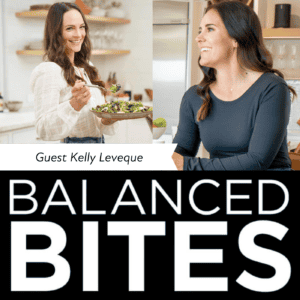For speed readers: check out my 10-second summary below
10-SECOND SUMMARY:
- Some sun can be healthy, but sometimes we need sunscreen (think beach days, acne, photoaging)
- Use a zinc-based STICK, or be sure that your liquid zinc formula hasn’t separated.
- Try Beautycounter for the face, Badger for kids and body.
THE DETAILS:
Some sun can be healthy, but sometimes we need sunscreen (think beach days, acne, photoaging)
I wrote in detail about the truth about sun exposure in my book Eat the Yolks. While I covered the basics, like:
- The sun is NOT the enemy
- We actually NEED sun exposure to get adequate vitamin D & critical photoproducts
- RESPONSIBLE sun exposure is key – which includes AVOIDING sunscreens with potentially dangerous, misleading or ineffective ingredients and opting for sun barriers when needed instead (clothing + shade)
Yet I recently realized that I need to expand on this even further. While I strongly believe that smart sun exposure is healthy and that avoiding overexposure is key, let’s be honest. Most of us want to be out in the sun for longer than we really should.
We want to be in the sun all day – and often, well beyond our skin’s natural burning threshold.
And when shade and protective clothing just aren’t going to happen, some topical sun protection is necessary to avoid a one-way ticket to burn city and all the damage that comes with it.
So let’s pick the safest, most tried-and-true option possible.
TECHNICAL DETAILS
Over the years, sun protection has been called several different things – most commonly, sunscreen and sunblock. The difference? Sunblocks contained zinc, which creates a physical barrier against both UVA and UVB. The downside to zinc-based sun protection? White, creamy mess.
Sunscreens were much more sheer, but only protected against one type of ray.
Today, no sun protection product is called “sunblock,”, because the term “sunblock” presents a liability issue: it implies a product that blocks all of the sun’s rays (impossible) and that doesn’t need reapplication. In reality, you should ALWAYS reapply.
Everything is called “sunscreen” now, but there are a ton of different options under that umbrella.
All sunscreens are now required to offer some protection from both UVA and UVB. This is where the term “broad-spectrum” came from – it’s really an alternative to the term “sunblock” that still indicates protection against both types of rays (but not necessarily using the safest option: zinc).
But these “broad-spectrum” options might give us a false sense of security, because they make us feel like all rays are blocked, all the time. In truth, the only requirement for these products is that a certain percentage of UVA protection is offered relative to their UVB protection.
This is where we get in to “maths,” which is not my strong suit. What I do know is that the protection offered from these products is very different, and less, than what we get from physical barriers like clothing.
Another downside: most broad-spectrum, non-zinc sunscreens are based on chemicals that might contribute to mutagenic changes in the skin when exposed to UV light, and some might cause environmental harm. These are the products with ingredients like avobenzone and oxybenzone. More research is needed, but I’m most comfortable with the more inert, physical, visible barrier that zinc provides.
From here on out, we’ll call non-zinc sunscreens chemical sunscreens, and zinc-based sunscreens physical sunscreens.
But, even with zinc-based physical sunscreen options, we need to choose wisely.
The interesting reason you should try a zinc-based STICK
The number one mistake people make when choosing safer sunscreen is that they don’t realize when the ingredients have SEPARATED.
With some sunscreen lotions, zinc – the key ingredient – can separate from the rest of the ingredients, lessening the sun protection. You’re particularly at risk when your sunscreen is from the prior summer. In zinc sunscreens formulated to be sheer, we might not realize this separation has occurred!
The brands I recommend have an excellent track record. There are certainly others out there, but these are my favorites.
In general, zinc-based sunscreen STICKS are ideal. No risk of separation, and no risk of inhalation (or neighboring beachgoer anger) as with spray sunscreens. (Please stop using spray sunscreens. I don’t need to breathe in a cloud of your laziness and unwillingness to rub.)
Try: Beautycounter or Badger
Here are the zinc-based physical sunscreen brands I like:
- Beautycounter Countersun for the face. The most sheer option, this has quality suspension ingredients in an antioxidant-rich base THAT NOW PROTECTS AGAINST BLUE LIGHT as well as UVA and UVB! This is a MAJOR innovation, and helps block the pro-aging damage from blue light (think the light from screens) unlike any other sunscreen.
- Beautycounter Sun Stick. Small but mighty, this is my favorite for ease of application, especially on my kids’ faces. I’ll use it on their bodies, too, when I don’t have the more affordable Badger Balm handy.
- Badger Balm, a favorite of mine for many years, makes excellent products across the board that are also affordable. Find out more here.
- Babo Botanicals has a 20% zinc oxide concentration in their stick, and it’s great for kids and for sensitive skin. Find out more here.
Here’s to safe sun exposure!




26 Responses
I have a question about what to use on your body, since the links to all the products you included say for use on face and ears. Can these products also be used on arms and legs, or should a different product/stick be applied there? I know we need to get some sun exposure, but I spend a lot of time outside hiking, biking, SUP-ing and want to be protected when I am out for an extended period of time. I saw that Babo had a few other sticks, do I need one for my face and different one for my body? Sorry to be so specific — I just wanted to clarify. Thanks for all that you do!
I personally use them all over, but it’s totally what feels most convenient for you! I actually sometimes slice off a little bit and rub it in my hands, then apply to get a nice even yet thin application. The reality is, no good zinc-based sunscreen is going to be drippy enough to get a great, convenient or quick application all over your body! It’s really the chemical sunscreens that can achieve that texture, and they’re certainly not safe. I think they probably just say “face and ears” because they’re smaller sticks :/ it honestly didn’t occur to me that this might inconvenience anyone, but I can see why it would! If you use your sunscreen quickly, I think you can get away with a tube or bottle. Ingredients separate over time, so you might be OK. I hope that helps!
Thanks, it does! I assumed it could be for the whole body but wanted to make sure before I bought a bunch.
Thanks for the article! So you rub this tiny little stick over your whole exposed body? How long does that take? How many “swims” would a stick probably last? Do you wear the same stick daily running errands, as you do at the beach?
Haha, kind of! I actually mostly use the stick on my face, hands, shoulders and chest! Targeted areas. I wear a one piece and a sarong so that usually helps too. But I’ll use it all over my little one – it’s the perfect size. I couldn’t tell you on the swims – usually the rule of thumb is to reapply every time you get out & get back in OR reapply every 60 minutes. I also will slice off a chunk, rub it in my hands, and apply that way – you get much more mileage out of that. The reason I like BC’s stick for myself (as an adult 😉 is because it’s the least cloudy/white of the three. I don’t wear this for daily errands, but that’s a personal choice I make around my personal threshold for sun exposure. It is the perfect size to toss in your purse, so it would be a great one to apply on any old day/while running errands. I might apply it in the car if the sun was beating down through the window, though, to protect from UVA (see my reply to Ticamom)
Be careful consuming lots of coconut oil! Coconut oil mimics estrogen…I consumed a tablespoon a day for 2 years, I now have a fibroid cyst the size of a 4 month old baby! It is from excess estrogen in my system….everything in moderation! 🙂
I can’t find anything in the literature to suggest anything but coconut oil having pro-progesterone effects, and progesterone opposes estrogen…hmmm…I wonder if you might have had unopposed estrogen for some other reason? I can’t imagine a mechanism for it being an estrogen mimicker, especially given its pro-thyroid effects. Mulling this over. I do hope you’re recovering well!
I’ve been wondering how to reconcile believing that sun exposure is needed with preventing sun damage/aging in skin. I know it’s different for everyone, but how long do you go in the sun usually before applying the stick? Do you use it every day bc they say even driving around you get sun damage. Thanks for this!
You should read my book, or go to my Eattheyolks.com website to read the section I wrote on vitamin D! You would probably like it. So, I actually do tend to “cover up” with clothing/hats in the car when the sun is beating down because the windows themselves actually filter out the UVB rays, which generate vitamin D and PROTECT us, while allowing UVA rays – the cancer-causing ones – through. UGH, right? So no, I don’t use sunscreen every day, but I try to be cognizant of what types of rays I’m getting. When I had a big window in my office, I would try to avoid direct sunlight through the window. I build up to about 30 minutes of unprotected sun exposure on my body during the course of the summer, but I generally do protect my face with a hat and sunscreen after 5-10 minutes. Photoaging damage is a cosmetic thing, and I’m a little vain about the skin on my face 🙂
Thank you! Speaking of face, I recently developed a pretty large sunspot (I would say stain LOL) right in the middle of my forehead!!! What gives??? Do you know what causes that and how to prevent? (Besides using the bc stick of course ) I think I’m going to have to start applying it daily at least on my forehead to prevent it from getting even more noticeable!
I just checked out the ingredients to the beauty counter stick and was surprised to find citrus oils in it. Citrus oils cause photo sensitivity and can even stain skin so how come that’s not an issue in the stick? Just trying to make sense of all the info 🙂 Thanks!
Hey there! I asked this question of Beautycounter as well, and did some research myself before I decided to buy & try. Not all citrus oils cause photosensitivity. Grapefruit oil does, though, and it’s in the stick! BUT it’s actually more about the concentration and the suspension ingredients and whether they’re “barriers or carriers” (which is a rhyme I made up to help myself remember). So, according to Lea Harris, a consensus essential oil expert, a 4% concentration is considered non-phototoxic. BC’s concentration of grapefruit oil is less than 1%. Additionally, some of the other ingredients in the stick, particularly zinc, serve as barriers to phototoxicity, while use of essential oils as we generally think of them (like for topical therapeutic application) usually use a “carrier” to PROMOTE absorption, rather than barriers which block it. Finally, the grapefruit oil is steam-distilled, which actually keeps the phototoxic elements from being released. SO, all told, I think Beautycounter felt it was a-ok to maintain its signature citrus scent in its sunscreen given all this! I hope it helps!
Hi Liz! Do you have any recommendations for darker skin tones? I’m having trouble finding a physical block that doesn’t turn me purple upon application.
Oh man, what a GREAT question! This isn’t something I ever thought about! Can you elaborate? What exactly happens when you apply sunscreen – is the sheen problematic? What do you mean by purple? Thanks for helping educate me!
Hi Liz! So, my skin tone is a bit deeper than Kelly Rowland’s. When I use a physical sunscreen, it never quite fades into my skin–leaving a purplish cast that doesn’t go away. I’ve tried color correcting drops, but some of them have weird oil bases that break me out. I’ve also heard of the minor SPFs of coconut oil and Shea butter…but I’d love to use something a bit more sophisticated under my mineral powder foundation. Maybe I just have to grin and bear it due to the nature of zinc oxide? I’d love to use something protective on my face, though, due to hyper pigmentation whenever I get a spot or two. Thanks for any light you can shed on the subject!
Got it! I wonder if the Beautycounter sunscreen would help with this. Where are you located? (I ask because you say “spot” which is very European, if you meant “zit!”)
However. Your skin being so dark means you have plenty of melanin, which can play a role in preventing damage. You might not NEED a daily sunscreen for protection from photoaging…but maybe I’m misunderstanding what you’re saying as far as spots and hyperpigmentation. You’ll have to excuse me, I’m operating on half a brain these days!
Hey Liz! I just want to say thank you so much for your help with this. I’m based out of New York (my hubbie is Australian so I’ve picked up his slang lol), and we get patchy sunlight at best. Your Skintervention guide and BB podcast have changed the food I eat and in turn, my skin (thank you thank you). When I get a pimple (spot) it usually lasts for two or three days. But the annoying brown mark it leaves behind can take weeks to fade. I thought maybe if I always wore sunscreen that wouldn’t happen? Then I figured the chemical ones probably weren’t doing me any favors…so that’s when I started trying the zinc ones. I’ll try the Beautycounter one on the days where I’m in direct sunlight, maybe? Right now I’m in Honolulu and my cousin let me use her Josie Moran spf 47 and it faded in pretty well. Anywho, thanks again for all you do: I’ll keep trying to find a good fit! 🙂
Ebony, I’m SUPER stumped, but I’m going to look into this when I can! I’m thinking this has something to do with melanin + your skin’s natural repair mechanism. Stand by!
Do you have any more specific information on astaxanthin supplementation? How much? What brand etc?
I would trust the Astaxanthin from VitalChoice.com. I would probably do 1 capsule per day for 30 days, then taper off to 1 a week. It’s really not an exact science, but that’s how I would do it!
I love how you tell people it’s ok to get some responsible sun exposure. And totally with you on the zinc oxide, but didn’t know how important the stick delivery is. I have used the Badger in the past and love it! Sticks are honestly so convenient. No worry about dripping. And great for applying to those crazy little areas that get burnt. (Like where you part your hair…ugh!)
YES! Ugh, the part!
Hi Liz,
What are your thoughts on prial life Organics sun block? Is it better than the badger balm?
It’s great! But I can’t TECHNICALLY compare the two since Badger is an FDA approved sunblock and the (excellent, zinc-based) products from PLO and Primally Pure are not.
Hi Liz! Question about the Primal Life Organics Sun Up for use on kids: On the EWG site it notes that the product contains clove bud oil, but on the Primal Life Organics site clove oil is NOT listed as one of the ingredients in any of the Sun Up products. I’m super interested to use this on my baby (who will be 6 months come summer time) and toddler (2 years come summer!), as well as myself, but the clove oil makes me a little nervous. I’ve read conflicting info about its use on kiddos during my research on natural teething remedies and it’s pretty controversial stuff. Do you have the down and dirty details/final answer on whether it contains clove oil, and if so, whether it’s in an amount that is safe for babies? Thanks!
Hi Chrissy! I don’t know why EWG would say that. If it’s not on PLO site, it’s not in the product! I’ve used Sun Up STICK with zinc (there are a few options for sun up products) on my little and I love it. If you’re still not super confident, Badger Balm is always great for littles too!